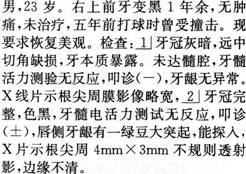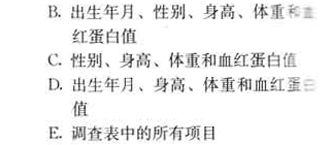共用题干
第一篇
“Don' t Drink Alone" Gets New Meaning
In what may be bad news for bars and pubs,a European research group has found that people drinking
alcohol outside of meals have a significantly higher risk of cancer in the mouth and neck than do those who
drink with food.Luigino Dal Maso and his colleagues studied the drinking patterns of 1,500 patients from
four cancer studies and another 3,500 adults who had never had cancer.
After the researchers accounted for the amount of alcohol consumed,they found that individuals who
downed a significant share of their alcohol outside of meals faced at least a 50 to 80 percent risk of cancer in
the oral cavity(口腔),pharynx(咽),and esophagus(食管),when compared with people who drank only
at meals.Consuming alcohol without food also increased by at least 20 percent the likelihood of laryngeal
cancer(喉癌)."Roughly 95 percent of cancers at these four sites traced to smoking or drinking by the study
volunteers,"Dal Maso says.The discouraging news,his team reports,is that drinking with meals didn't
eliminate cancer risk at any of the sites.
For their new analysis,the European scientists divided people in the study into four groups,based on
how many drinks they reported having in an average week.The lowest-intake group included people who
averaged up to 20 drinks a week.The highest group reported downing at least 56 cups of alcohol weekly for
an average of eight or more per day.Cancer risks for the mouth and neck sites rose steadily with consumption
even for people who reported drinking only with meals.For instance,compared with people in the lowest
group,participants who drank 21 to 34 alcohol cups a week at least doubled their cancer risk for all sites
other than the larynx.If people in these consumption groups took some of those drinks outside meals,those
in the higher consumption group at least quadrupled(四倍)their risk for oral cavity and esophageal cancers.
People in the highest-consumption group who drank only with meals had 10 times the risk of oral
cancer,7 times the risk of pharyngeal cancer,and 16 times the risk of esophageal cancer compared with
those who averaged 20 or fewer drinks a week with meals.In contrast,laryngeal cancer risk in the high-in-
take,with-meals-only group was only triple that in the low-intake consumers who drank with meals.
"Alcohol can inflame(使发炎)tissues. Over time,that inflammation can trigger cancer."Dal Maso
says. He suspects that food reduced cancer risk either by partially covering digestive-tract(消化道)tissues
or by taking alcohol off those tissues.He speculates that the reason laryngeal risks were dramatically lower
for all study participants traces to the tissue's lower exposure to alcohol.
Who are more likely to develop cancer in the mouth and neck?
A:People who drink alcohol at meals.
B:People who never drink alcohol.
C:People who drink alcohol outside of meals.
D:People who drink alcohol only at bars and pubs.


 正确的诊断是
正确的诊断是 查看材料
查看材料

